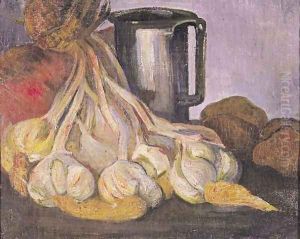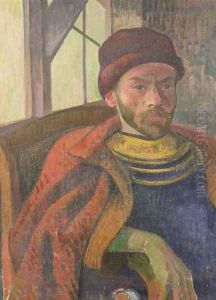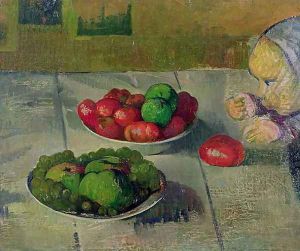Meyer Isaac de Haan Paintings
Meyer Isaac de Haan was a Dutch painter, born in Amsterdam on April 14, 1852. He was part of the post-impressionist movement, contributing significantly to the development of modern art at the turn of the 20th century, despite his relatively short life and career. De Haan's work is characterized by its intense emotional content, innovative use of color, and exploration of light, which together create deeply personal and expressive compositions.
De Haan's journey into the arts was unconventional. Originally destined for a career in the family's bakery business, his passion for painting led him to pursue art seriously in his late twenties. He studied at the Rijksakademie van beeldende kunsten in Amsterdam and was influenced by the works of Rembrandt and the Dutch masters, which is evident in his early works' dramatic use of light and shadow. However, it was his association with the avant-garde artists' group Les Nabis, including his close friendship with Paul Gauguin, that profoundly impacted his stylistic development. De Haan met Gauguin in Paris, and in 1889, he joined him in Pont-Aven, Brittany, where he fully embraced the Post-Impressionist style, focusing on symbolic content and the use of bold colors.
Despite his artistic evolution and the burgeoning recognition of his talent, Meyer de Haan's career was plagued by poor health. In 1895, at the age of 43, he died in Amsterdam, leaving behind a small but influential body of work. His paintings, which were not widely recognized during his lifetime, gained appreciation posthumously, particularly for their role in the development of modern art. De Haan's legacy is that of an artist who, through his exploration of emotional depth and his innovative techniques, contributed significantly to the transition from traditional to modern art. Today, his works are held in high regard, featured in museum collections and exhibitions around the world, highlighting his importance in the history of art.


